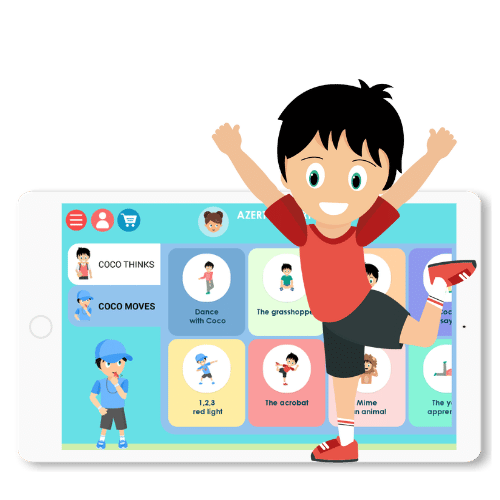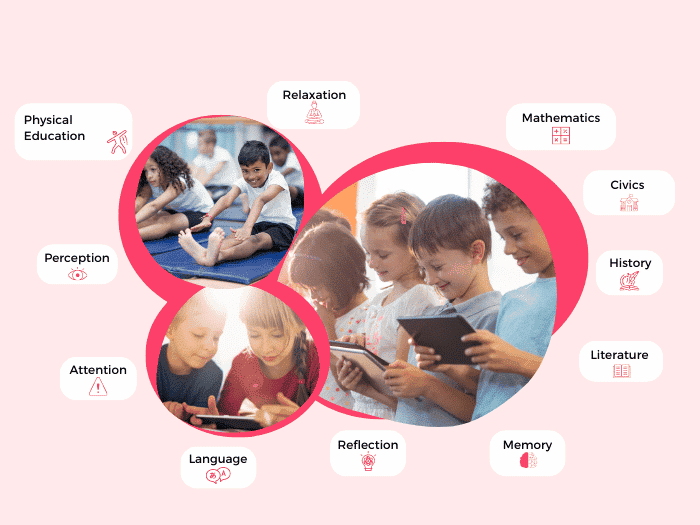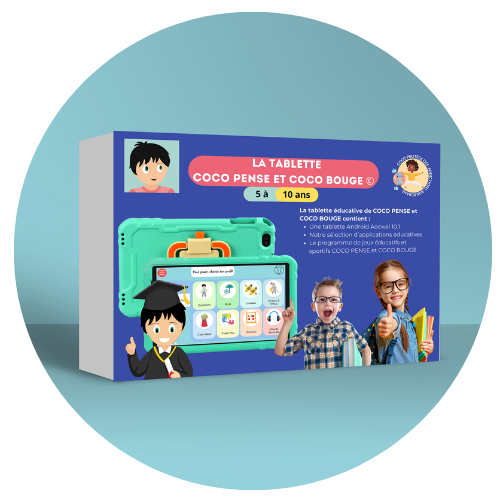Not all disabled people use wheelchairs. Some people may appear “flawless”, yet they are classified as disabled. This means that not all disabilities can be read on the face. Hence the notion of “invisible disability”. What is the real meaning? Invisible disability at school: what support should we expect? Answers and explanations for all parents of students. Check out this guide!
Invisible disability at school, let’s talk about it!
In this first part, it is necessary to explain what an invisible disability is. Find out!
What is an invisible disability in schools?
The number of people with disabilities in school is increasing. This can be explained by the desire not to set these categorized individuals in motion. Children with disabilities are able to acquire knowledge or skills. Is there a difference between invisible disabilities and others?
In fact, these are the same disabilities that can be seen in some students at school. The term “invisible disability” in schools is used in a specific context. When the disability is not noticed by others or the environment. It should be noted that 8 out of 10 people live with a disability without others knowing about it. We will say that these have an invisible handicap. Therefore, every child in the school would be affected, unless he or she is found to be free of any disability after a diagnosis by a specialist. Parents must be vigilant as they do not always know what their children are suffering from.
An invisible disability is not immediately obvious. However, some disabilities are evident from the moment you are in the presence of the person concerned. For example, a student with a lower limb disability is sitting in a wheelchair.
Invisible disabilities affect learning in school
Invisible disabilities at school have a negative impact on academic learning. In many cases, poor performance in school is attributed to these disabilities. For example, a child with a disability will tend to “run away” from school or show a lack of interest in classes. Invisible disabilities include a variety of conditions. When detected early, appropriate treatment can help students improve their academic performance.
What are the different types of invisible disabilities?
Invisible disabilities can take many forms. Of course, we are unable to quote them all here. However, here are a few handicaps.
The “DYS” disorders
The prefix “dys” is used to refer to a group of language disorders. In this group you have dyslexia, dyspraxia, dysgraphia, and dyscalculia. These learning disabilities result in a delay in the acquisition of spoken or written language. Dyslexia in a child means difficulty in reading. In the case of dyspraxia, the student shows a certain clumsiness that affects learning. As for dysgraphia, it promotes illegible or incoherent writing. Finally, dyscalculia leads to differences in learning mathematics. Children at risk for these learning disabilities can be managed.
Sensory impairments
They are part of the invisible disabilities at school. In this category, a distinction is made between visual and hearing impairments. The first ones concern the student’s eyesight. The second type of hearing aid is used to treat the child’s or adolescent’s hearing. They need help throughout their school career. It is important to know that these disabilities require early intervention. Fortunately, pedagogical advances have made it possible to tailor care for children with sensory disabilities. Not to mention the training that teachers receive.
Chronic diseases
When we talk about chronic diseases, we are referring to many pathologies that you are more or less familiar with. First, there are cancers and conditions caused by insufficiency (cardiac or respiratory). Let’s also touch on cases of head trauma or brain injury. All these conditions are not easy to reconcile with school.
Another example of a chronic illness is a student with multiple sclerosis or cystic fibrosis. These children can benefit from support. You need to be well informed in order to better orient yourself.
Focus on support for invisible disabilities
What support is there for these children in the schools? We hear about caregivers, CRPD, etc.
Schooling for students with disabilities
All children have the right to a good education adapted to their age and situation. No child with a disability should be overlooked. You can build a personalized schooling project.
The child with a disability will thus be able to benefit from a schooling that is better suited to his or her particular needs. The validation of the request is the task of the Convention on the Rights of Persons with Disabilities (CRPD). Schooling in a regular environment can be individual or collective. Students with disabilities have the opportunity to join special schools.
Special schools
They have a major contribution to make to the education of children with disabilities. A special school allows the disabled child to take classes according to his/her disability. It is integrated into the operation of the establishment where it is located. From then on, each head of school works for a better management of these classes by the teachers and the caregiver.
Caring for people with invisible disabilities
To be caring is to show a favourable disposition towards all those individuals who suffer from invisible handicaps in school. It pushes to seek the good or the happiness of these people with specific needs. But it seems impossible to identify them, because their disabilities are not apparent.
Practical Cases: Managing Invisible Disabilities at School
Managing invisible disabilities at school is a daily challenge for affected students, their peers, as well as for teaching and administrative staff. Recognizing, understanding, and supporting these disabilities require a tailored and compassionate approach. Here are some practical cases illustrating how to react and what to do in these situations.
Case 1: Attention Deficit Hyperactivity Disorder (ADHD)
Scenario: Lea, 12 years old, has ADHD. She struggles to stay focused during classes and is often perceived as disruptive.
Approaches to respond:
- Pedagogical adaptation: Offer shorter working sessions with breaks, use engaging visual aids.
- Personalized support: Establish regular appointments with a school psychologist.
- Awareness: Organize awareness sessions for teachers and students about ADHD.
Case 2: Autism Spectrum Disorder (ASD)
Scenario: Maxime, 10 years old, is on the autism spectrum. He has difficulties with social interaction and is often isolated.
Approaches to respond:
- Social inclusion: Promote his integration by encouraging group activities where he feels comfortable.
- Specific accommodations: Create a calm and predictable environment to reduce his anxiety.
- Specialized support: Collaborate with specialized educators to develop his social skills.
Case 3: Dyslexia and Associated Disorders
Scenario: Sarah, 14 years old, is dyslexic. She struggles with reading and writing, affecting her learning and self-confidence.
Approaches to respond:
- Adapted tools: Use reading and writing software tailored for dyslexics
- Academic support: Offer specific tutoring sessions for dyslexics.
- Encouragement: Encourage and celebrate her successes, no matter how small, to boost her confidence.
Case 4: Anxiety and Emotional Disorders
Scenario: Kevin, 16 years old, suffers from severe anxiety. He struggles to participate in class and avoids stressful situations.
Approaches to respond:
Safe environment: Create a space where the student can feel safe to express his anxieties.
Anxiety management strategies: Incorporate relaxation and mindfulness exercises into the school routine.
Psychological support: Encourage follow-up with a mental health professional.
Case 5: Auditory Processing Disorder (APD)
Scenario: Emilie, 9 years old, has an Auditory Processing Disorder. She struggles to understand verbal instructions in class, which can be mistaken for a lack of attention or motivation.
Approaches to respond:
- Written instructions: Supplement oral instructions with clear written directions.
- Classroom positioning: Ensure Emilie is seated in an area of the classroom where she can easily see the teacher’s face, thereby reducing auditory distractions.
- Assistive technologies: Use assisted listening devices to improve sound clarity.
Case 6: Chronic Fatigue Syndrome (CFS)
Scenario: Jordan, 15 years old, suffers from Chronic Fatigue Syndrome. His fluctuating energy levels make it challenging to maintain regular attendance in class.
Approaches to respond:
- Flexibility in scheduling: Adjust Jordan’s schedule to allow him to attend classes when he feels most energetic.
- Distance learning: Provide the option to participate in online classes or use recorded lectures for days when he is too fatigued to attend in person.
- Breaks and rest: Arrange rest periods during the school day.
Case 7: Eating Disorders
Scenario: Clara, 13 years old, struggles with eating disorders that affect her concentration and energy in class.
Approaches to respond:
- Discreet support: Offer psychological support without stigmatizing or drawing unwanted attention to her eating habits.
- Awareness: Educate all students about the importance of healthy eating without specifically focusing on eating disorders.
- Health liaison: Establish a health liaison within the school whom Clara can consult with confidentiality.
Case 8: Mood Disorders, such as Depression
Scenario: Alex, 17 years old, battles depression, which affects his participation and interest in school activities.
Approaches to respond:
- Psychological support: Ensure Alex has access to regular psychological support, whether within the school or through external services.
- Mental health awareness: Promote a positive mental health culture in the school to reduce stigma and encourage students to talk about their issues.
- Personalized study plan: Adapt academic requirements and deadlines for Alex, recognizing that his ability to complete tasks may vary.
These cases illustrate the importance of an individualized and sensitive approach to each student’s specific needs. By implementing tailored support strategies, the school can play a crucial role in managing invisible disabilities, thus promoting the flourishing and academic success of all students.
Use the COCO THINKS and COCO MOVES educational program at school,
inclusive for all
The COCO THINKS and COCO MOVES application contains more than 30 educational games to work on English, math, logic, memory or attention. In addition, the application imposes a sports break every 15 minutes of screen time to teach measured screen use.
Much smarter than a parental control!


COCO also accompanies children with special needs
Other articles that might interest you:
Digital Games and Tools to Spark Creativity in the Classroom
In recent years, the landscape of education has undergone a significant transformation, largely driven by the...
How to Handle an Autistic Student’s Meltdown in Class: Scenarios and Solutions
Understanding the triggers that can lead to a meltdown is crucial for both educators and caregivers. Triggers can vary...
Autism and Communication: Facilitating Interaction in the Classroom
Communication challenges are a hallmark of autism spectrum disorder (ASD), affecting how students express themselves...





